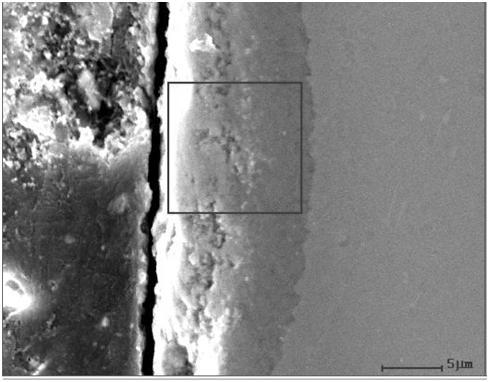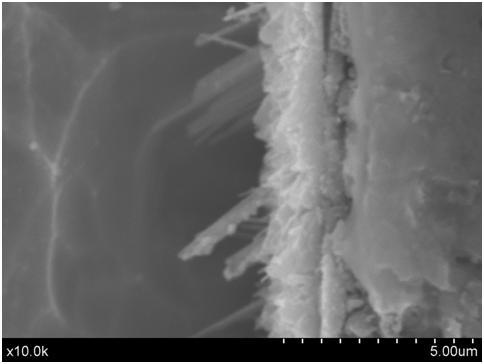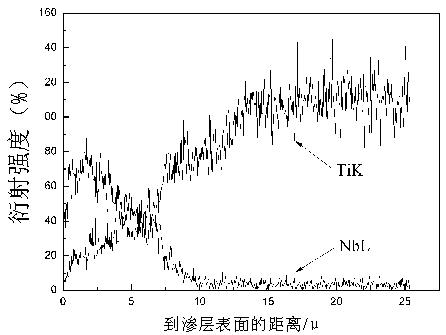Salt bath niobium infiltrating agent and niobium infiltrating method for metal titanium surface
A technology of metal titanium and salt bath, which is applied in the direction of metal material coating process, coating, solid-state diffusion coating, etc., can solve the problems of poor flexibility, high cost, poor industrial practicability, etc., and achieve the effect of good interface bonding
- Summary
- Abstract
- Description
- Claims
- Application Information
AI Technical Summary
Problems solved by technology
Method used
Image
Examples
Embodiment 1
[0028] A method for infiltration of niobium on the surface of titanium metal in a salt bath, which includes preparation of an infiltration agent, surface pretreatment of the workpiece, pretreatment of the infiltration agent, niobium infiltration treatment and cleaning of the workpiece.
[0029] The preparation of osmotic agent refers to 840 grams of anhydrous borax 2 B 4 O 7 ), 100 grams of niobium oxide (Nb 2 O 5 ) And 60 grams of silicon carbide (SiC) are mixed uniformly and placed in a 120 ℃ oven for 40 minutes to obtain the required metal titanium surface salt bath niobium agent for use. Among them, silicon carbide is commercially available green and pure silicon carbide with a particle size of 150-200 The purity of niobium oxide is at least 99.5%;
[0030] The surface pretreatment of the workpiece is to cut the TC4 titanium alloy bar into a profile of 10mm×12mm×3mm for use. The surface of the cut titanium metal is cleaned with degreasing and deionized water, and then polished ...
Embodiment 2
[0036] The method is basically the same as in Example 1, except that the niobium infiltration agent formula used is composed of 840 grams of Na 2 B 4 O 7 (Accounting for 84%), 100 grams of Nb 2 O 5 (10%), 60 grams of SiC (6%).
[0037] Test after taking out the sample. The thickness of the seepage layer is 1.6μm ( figure 2 ); The surface hardness of the niobium layer is 1155HV, which is about 3.5 times the hardness of the substrate.
Embodiment 3
[0039] The method is basically the same as that of Example 1, except that the niobium infiltration method used has a temperature of 1000°C.
[0040] After taking out the sample and testing, the surface hardness of the niobium infiltration layer is 1071.8HV, which is about 3.2 times the hardness of the substrate.
PUM
| Property | Measurement | Unit |
|---|---|---|
| thickness | aaaaa | aaaaa |
| hardness | aaaaa | aaaaa |
| thickness | aaaaa | aaaaa |
Abstract
Description
Claims
Application Information
 Login to View More
Login to View More - R&D
- Intellectual Property
- Life Sciences
- Materials
- Tech Scout
- Unparalleled Data Quality
- Higher Quality Content
- 60% Fewer Hallucinations
Browse by: Latest US Patents, China's latest patents, Technical Efficacy Thesaurus, Application Domain, Technology Topic, Popular Technical Reports.
© 2025 PatSnap. All rights reserved.Legal|Privacy policy|Modern Slavery Act Transparency Statement|Sitemap|About US| Contact US: help@patsnap.com



